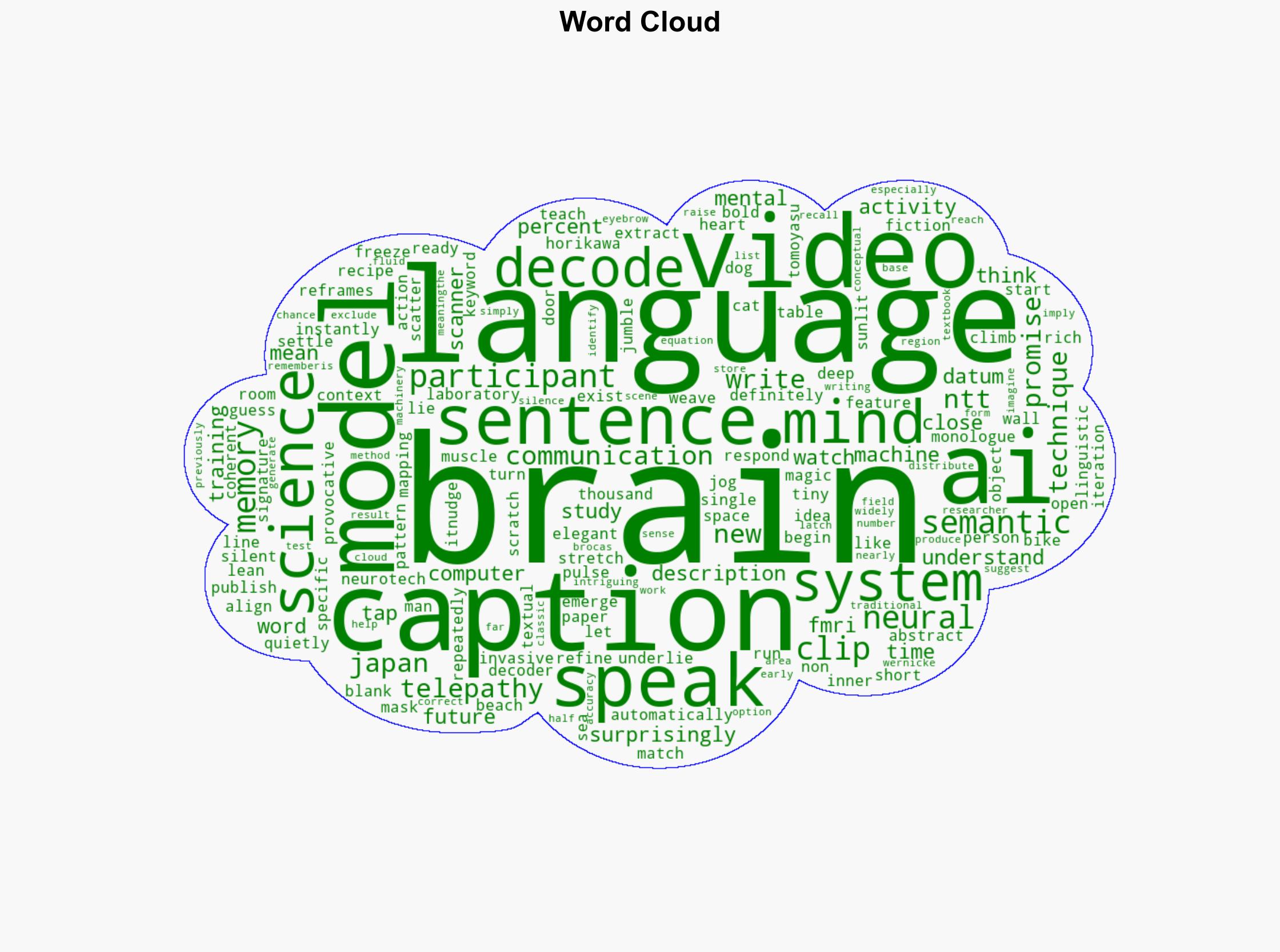This Japanese AI Can Instantly Describe What Youre Seeing or Imagining – Ubergizmo
Published on: 2025-11-15
AI-powered OSINT brief from verified open sources. Automated NLP signal extraction with human verification. See our Methodology and Why WorldWideWatchers.
Intelligence Report:
1. BLUF (Bottom Line Up Front)
The development of Japanese AI capable of decoding brain activity into text represents a significant advancement in neurotechnology. The most supported hypothesis is that this technology will primarily advance medical applications, particularly in aiding individuals with communication disabilities. However, the potential for misuse in privacy invasion and unauthorized surveillance presents a strategic risk. Confidence Level: Moderate. Recommended action includes monitoring technological developments and advocating for regulatory frameworks to safeguard privacy.
2. Competing Hypotheses
Hypothesis 1: The primary application of this AI technology will be in the medical field, enhancing communication for individuals with paralysis or severe aphasia. This hypothesis is supported by the technology’s ability to translate brain activity into coherent text, which could revolutionize patient care.
Hypothesis 2: The technology could be exploited for surveillance or unauthorized access to individuals’ thoughts, posing significant privacy risks. This is plausible given the potential for misuse in monitoring and interpreting brain activity without consent.
Hypothesis 1 is more likely due to the current technical limitations and ethical considerations surrounding the technology’s deployment. However, Hypothesis 2 cannot be dismissed given historical precedents of technology misuse.
3. Key Assumptions and Red Flags
Assumptions: It is assumed that the technology will remain primarily in controlled, ethical environments such as medical research and treatment. It is also assumed that current technical limitations (e.g., the need for fMRI scanners) will not be rapidly overcome.
Red Flags: The potential for rapid technological advancement could outpace regulatory measures. Additionally, the lack of explicit mention of privacy safeguards in the development process is concerning.
4. Implications and Strategic Risks
The primary implication is the potential transformation of patient care for individuals with communication disabilities. However, strategic risks include the erosion of mental privacy and the possibility of unauthorized surveillance. Politically, this could lead to debates over privacy rights and the ethical use of neurotechnology. Economically, there could be a surge in demand for related technologies and services, with significant market implications.
5. Recommendations and Outlook
- Monitor advancements in neurotechnology and AI to anticipate potential misuse.
- Advocate for international regulatory frameworks to ensure ethical use and protect privacy.
- Engage with stakeholders in the medical and tech industries to promote responsible development.
- Best-case scenario: The technology is used ethically to improve medical outcomes without privacy breaches.
- Worst-case scenario: The technology is misused for unauthorized surveillance, leading to significant privacy violations.
- Most-likely scenario: The technology sees gradual adoption in medical fields with ongoing debates over privacy and ethical use.
6. Key Individuals and Entities
Tomoyasu Horikawa, NTT Communication Science Laboratory, Japan.
7. Thematic Tags
Cybersecurity, Neurotechnology, Privacy, AI Ethics
Structured Analytic Techniques Applied
- Adversarial Threat Simulation: Model and simulate actions of cyber adversaries to anticipate vulnerabilities and improve resilience.
- Indicators Development: Detect and monitor behavioral or technical anomalies across systems for early threat detection.
- Bayesian Scenario Modeling: Quantify uncertainty and predict cyberattack pathways using probabilistic inference.
Explore more:
Cybersecurity Briefs ·
Daily Summary ·
Support us
·





